The products and services mentioned below were selected independent of sales and advertising. However, Simplemost may receive a small commission from the purchase of any products or services through an affiliate link to the retailer's website.
The holiday season is the perfect time to try out new recipes, especially dessert recipes. And a warm apple pie on a cold winter day seems like a deliciously festive choice.
But when I’ve baked pies, I often struggle to get the crust right. The edges in particular tend to brown much faster than the filling cooks. So I was glad to try out a suggestion to bake pies in a brown paper bag.
A few tips I saw that I’d definitely recommend:
First, I bought food-grade brown paper bags on Amazon so I wouldn’t be dealing with fumes from recycled grocery store bags with painted-on logos. Recycled materials are great unless you’re heating them up while cooking, which could release toxic chemicals. You can tell if the brown paper bag you’re using is recycled by checking for a recycling logo. Making your own stapled parchment paper sack is another option to try out if you don’t have the right kind of brown bag.
Second, if you do try this brown-bag baking method, make sure the bag never touches the sides or top of your oven as it may cause the bag (or parchment paper) to catch on fire. Most pie baking temperatures are in the 300 to 400-degree Fahrenheit baking range and shouldn’t be too hot for the bag method.
I opted to use two Marie Callender’s frozen and ready-to-bake apple pies for this brown-bag test so it wouldn’t be my pie preparation that was a variable in how the two pies came out.
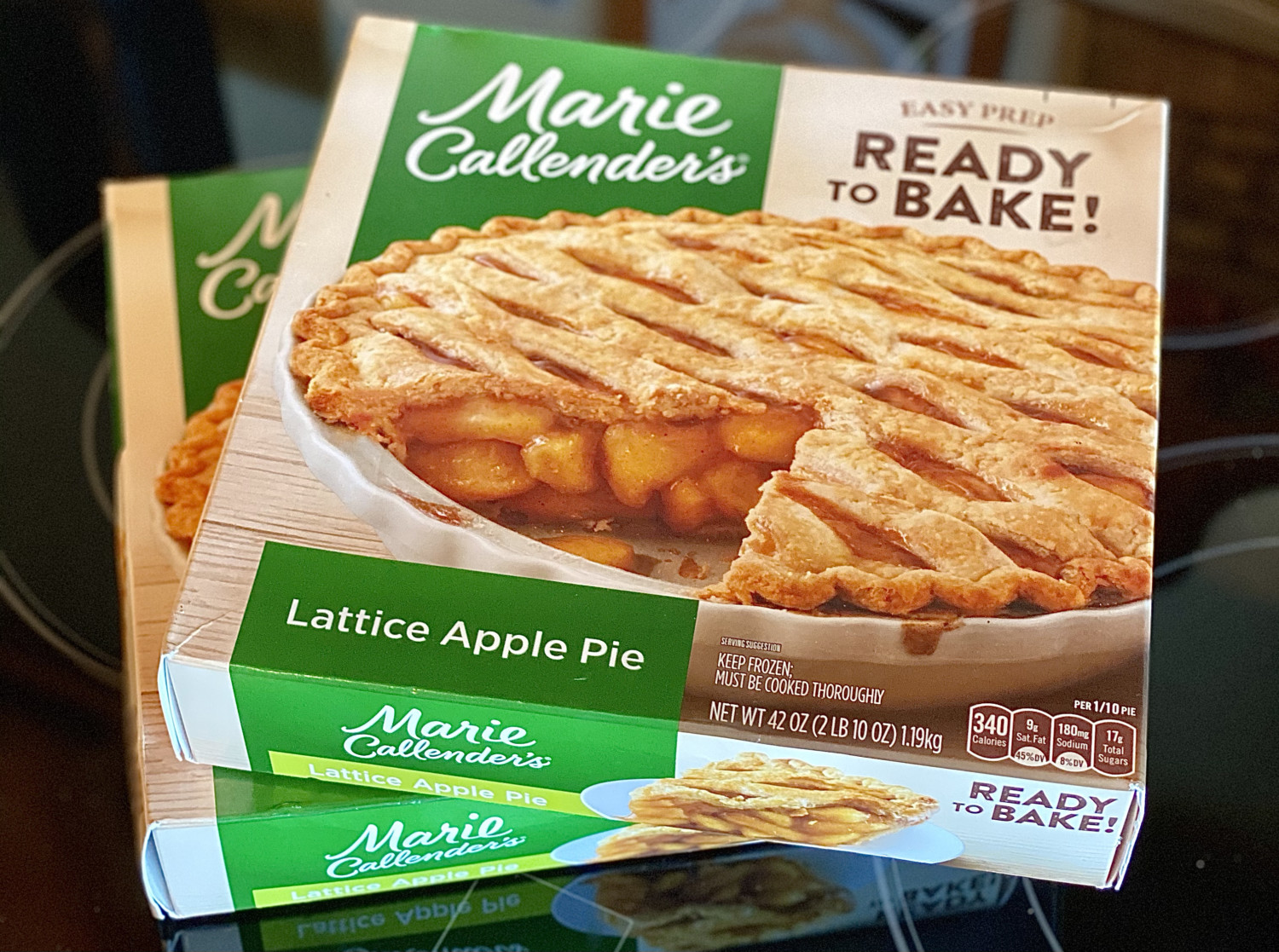
I did, however, read over Food 52’s test of a brown bag apple pie from scratch, in which writer Leslie Stephens used clues from the famous Elegant Farmer pie recipe to make a picture-perfect version. And I referenced The Kitchn’s recipe tryout too.
Here’s how my two frozen pies looked straight out of the box.
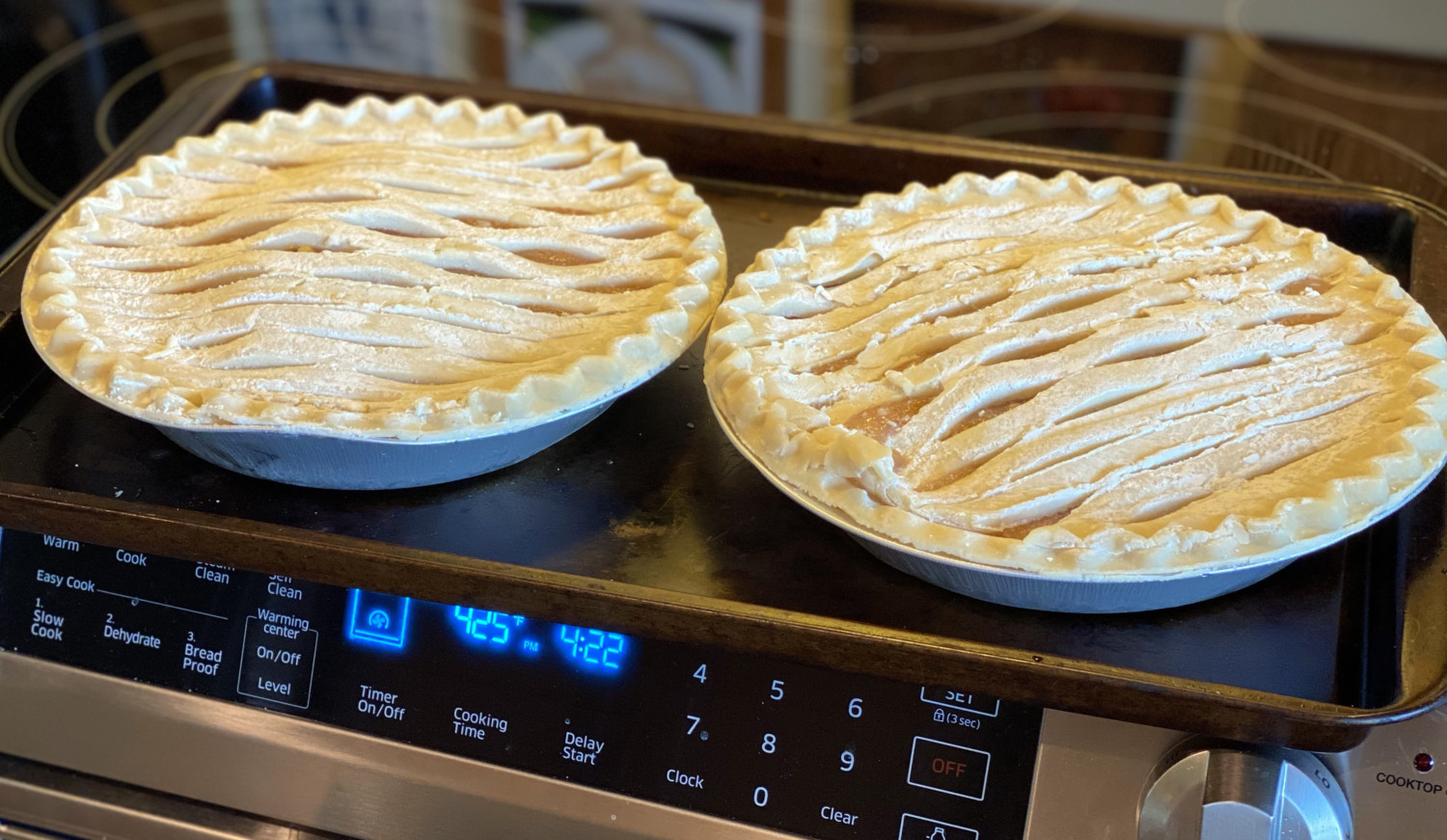
I brushed an egg wash on top of the crusts and then and sprinkled them with white granulated sugar as The Kitchn suggested for an extra golden and crisp crust.

Then I tucked one pie into a large, Kraft brown bag and used two binder clips to close it up. You could also staple the bag shut. The other pie I put directly on a baking sheet. I popped both apple pies into the oven together and followed the boxed Marie Callender’s directions to cook them from frozen at 425 degrees Fahrenheit for 55-65 minutes.

After 40 minutes of baking, I checked on the pies. The brown bag pie (below left) was not yet very golden brown though beginning to crisp up. The pie put directly in the oven (below right) was already as brown as I wanted it to get while not completely cooked through.
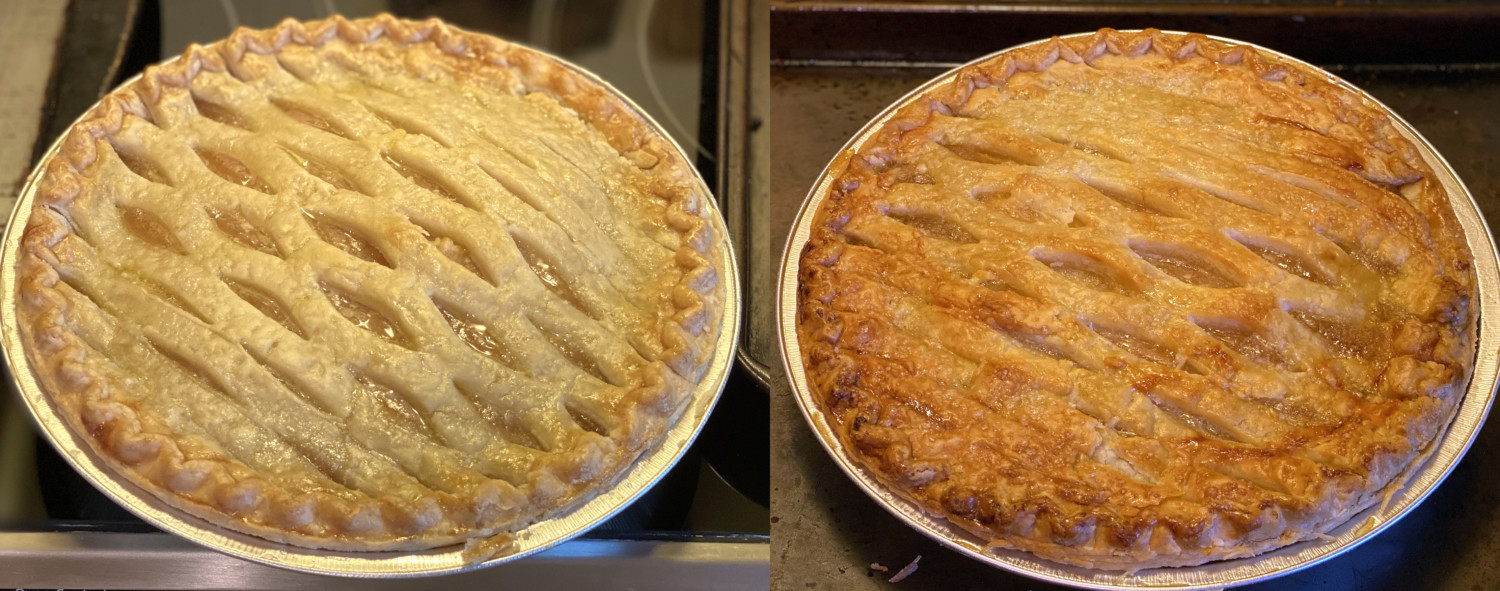
Since The Kitchn, Food 52 and The Elegant Farmer’s brown bag pies call for cutting a circle in the top of the brown bag partly through cooking, I did that with my brown bag and put the pie back in it and in the oven.

I also wrapped foil around the edges of the other pie so I wouldn’t burn it to a crisp. I dislike this part because it’s tricky to fit foil onto the hot edges of a half-cooked pie.
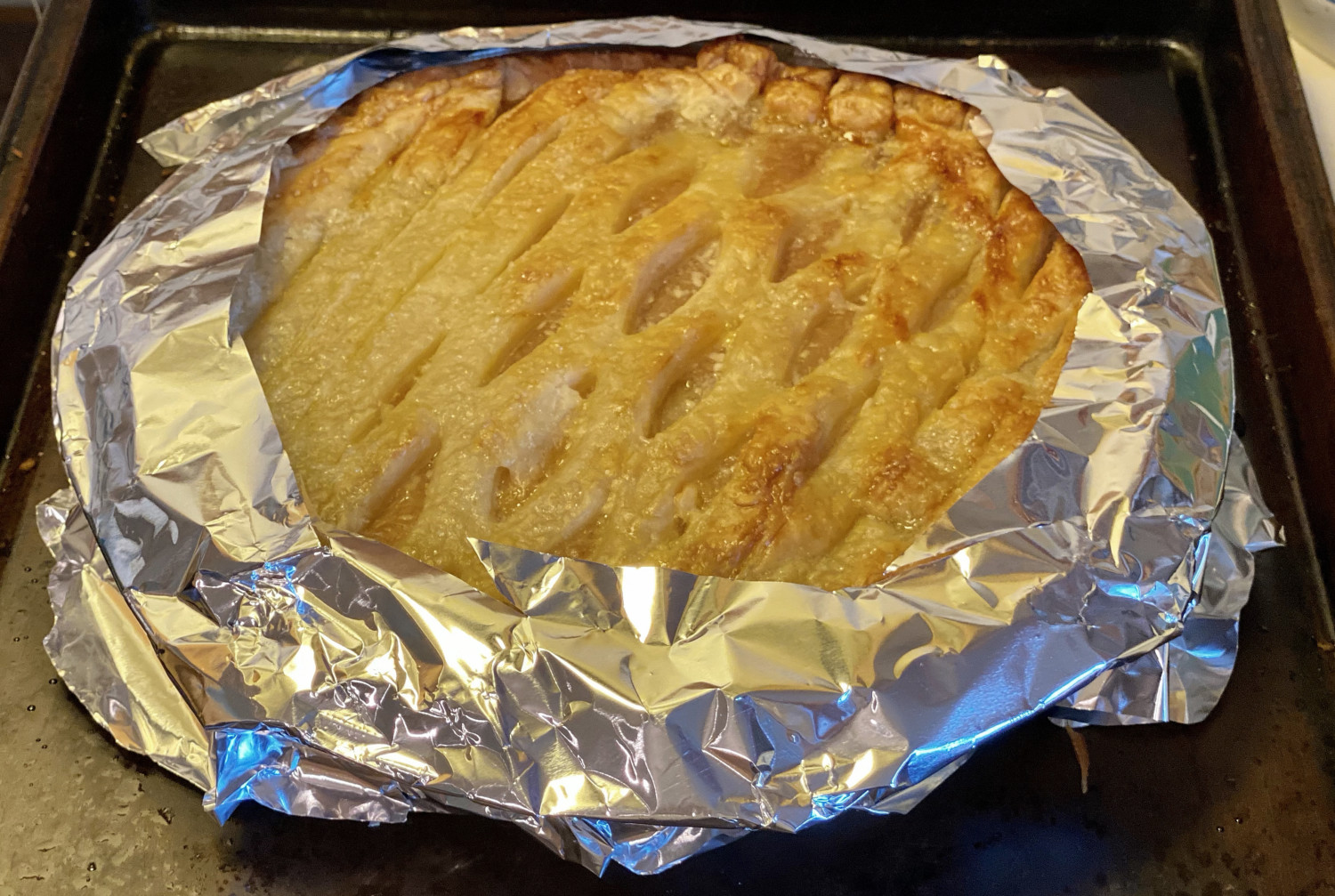
Then I lowered the temperature slightly (since the direct-in-the-oven pie was already so brown) and set the oven timer for another 15 minutes.
The two finished pies are below. The one on the left is the non-bag pie. (The crust edges still came out a bit browner than the bagged pie but the foil and lower temperature stopped the over-browning.) The brown bag pie came out perfect! It was crisp and brown and cooked all the way through but not soggy.
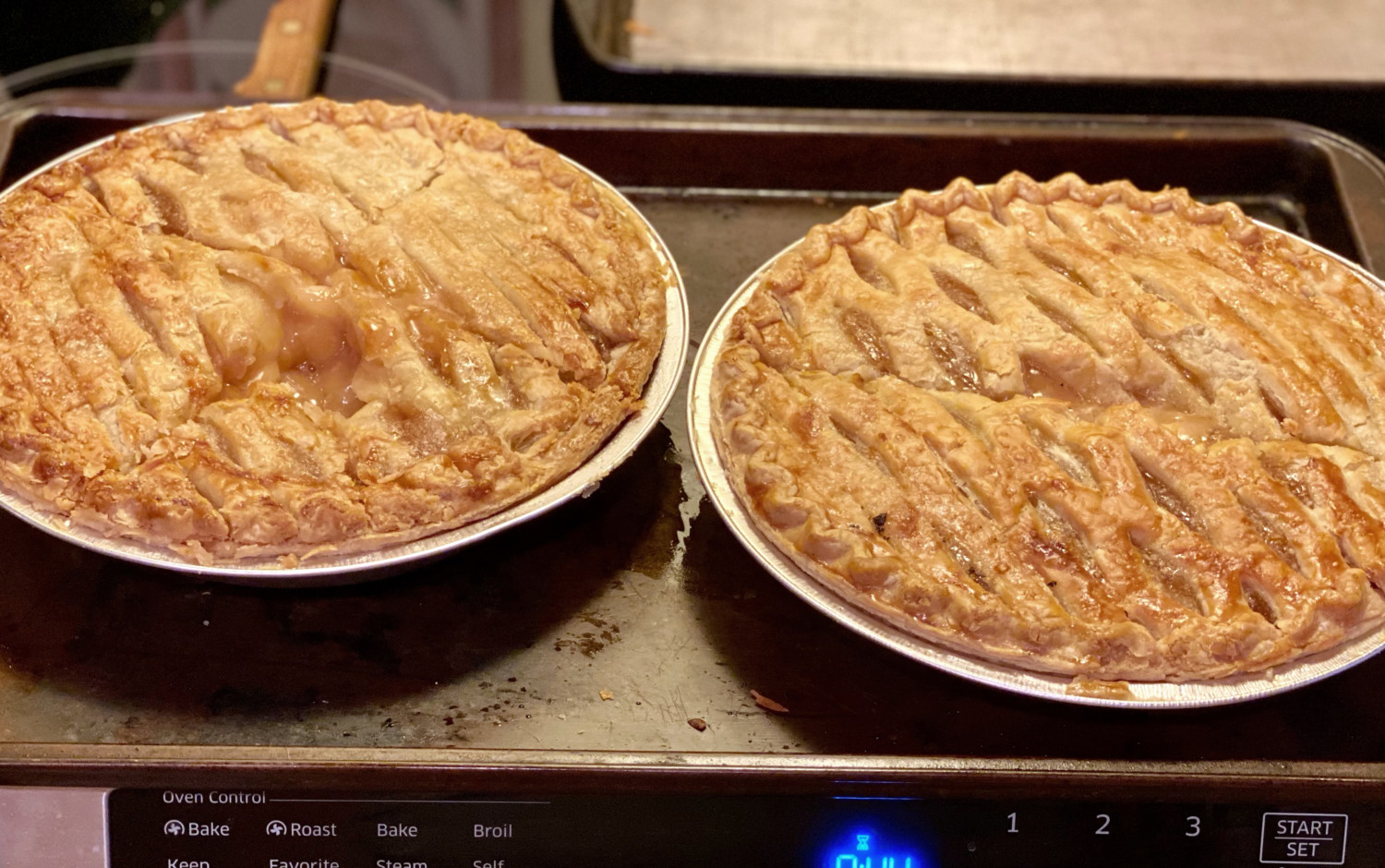
My family taste testers said both pies tasted about the same — delicious! I did notice the next day when I flipped some pieces of both pies over that the brown bag pie crust (at left) had browned up on the bottom more than the pie baked directly in the oven (at right), which was paler.
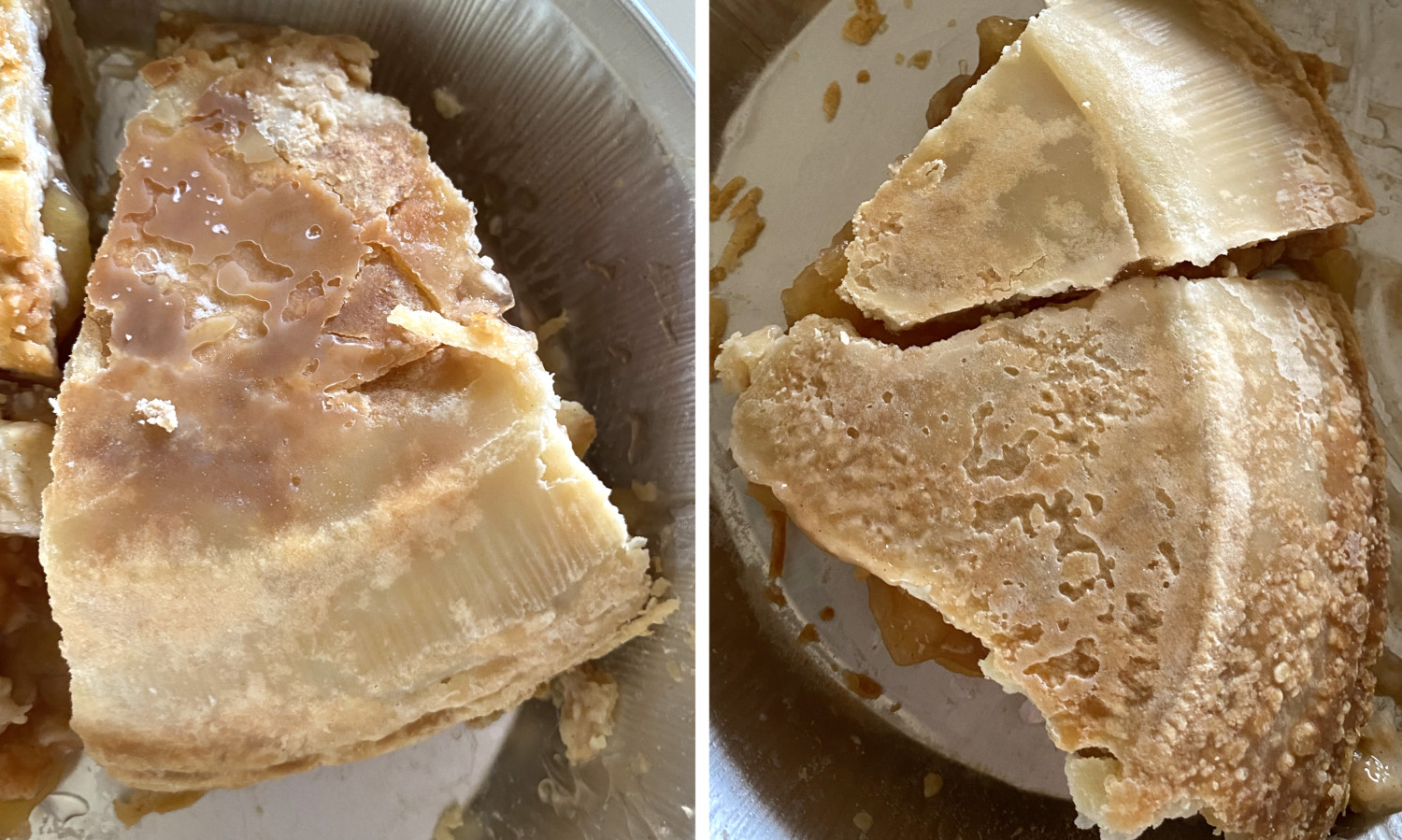
I would definitely use this brown-bag baking method again, as it’s less trouble than piecing foil to your crust edges to avoid burning. The bag method seemed to allow for a more gradual and even baking as well.
Other things to keep in mind when baking: the darkness of your cooking surface will affect how your baked goods come out. A darker tray or pan will brown up cookies and pie bottoms more, while a lighter-colored metal is less likely to do that. Using a glass, aluminum or ceramic pie pan will also change the variables and lead to differences in your pie results.
What do you think? Will you try this unorthodox baking method?
This story originally appeared on Simplemost. Checkout Simplemost for additional stories.


